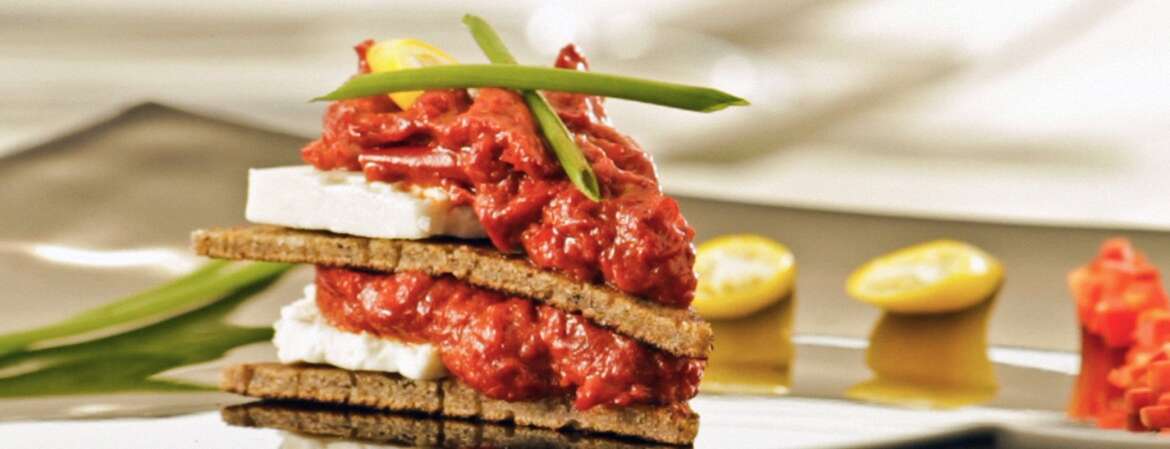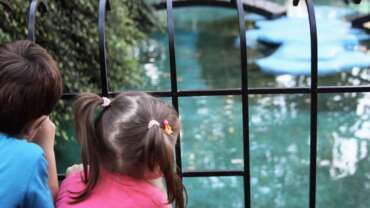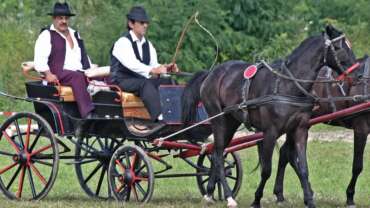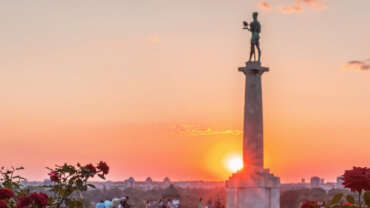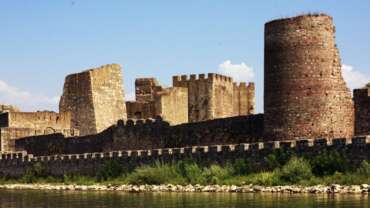Experiences in Serbia
With its richly diverse culture and gastronomy, Serbia offers exhilarating new experiences which are guaranteed to make for an unforgettable visit.Be sure to check out one of the many film, music and culinary festivals, which bring hundreds of thousands of people to Serbia every year.
Our country’s museums and galleries display artefacts of immeasurable artistic and cultural value, as well as works of contemporary Serbian artists.
Archaeological sites across Serbia showcase the remains of the different great civilisations that once ruled this region, starting from the Neolithic culture of Lepenski Vir (dating back more than 9,000 years), to the Starčevo culture to artefacts left behind by ancient Romans to medieval Serbian, Turkish and Austro-Hungarian fortresses.
One of the best ways to get to know the soul of a people is to experience its national cuisine. In Serbia hospitable hosts will welcome you with tasty dishes made with generations old family recipes, each occupying a treasured spot in Serbian tradition. You can also sample traditional Serbian wines, cheeses, cured meats, Futog cabbage and many other delicacies with a protected designation of origin.
Savoury Serbian dishes are best washed down with local wine, local fruit brandy known as “rakija”, fruit juices, teas made of local herbs or mineral water of protected origin.
And when you return home brimming with new experiences, you will understand what it means to truly get to know a country inside-out.
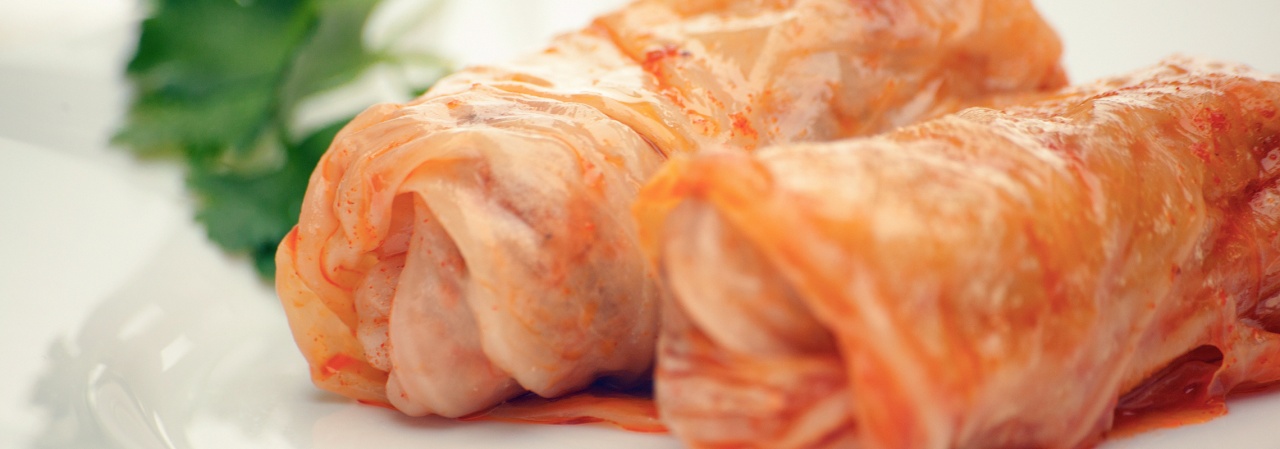
Gastronomy
Serbia is a true foodie’s paradise. Savoury soups and broths, vegetable dishes, pastries and meats as well as irresistible desserts are daily staples at restaurants and dining tables across the country.
Heavily influenced by the neighbouring Balkan peoples, as well as other European nations, Serbian cuisine is rich and diverse.
Thus, here you can taste the Hungarian goulash, the German strudel and the Turkish baklava yet we also boast some truly authentic Serbian dishes that can’t be found elsewhere.
Favourite foods in the northern part of the country are mainly dough-based, like bread and noodles; in central Serbia, the people are partial to filo pies and roast pork; the west of the country prefers cured meats and lamb dishes, while those in the eastern parts enjoy lamb boiled in milk, polenta and dry shepherds’ pies.
In the south, the dining tables are laden with roasted meats served with typical vegetables of the region, while the people of Kosovo and Metohija have a taste for bungur, pirjanice and numerous lamb and mutton dishes.
After the delicious and plentiful savoury courses, treat yourself to some of the many local sweets – succulent plum, apple, cherry or raspberry cakes, homemade jams and crunchy filo pies.
For further enjoyment couple the tasty delicacies with some of superb local wines or “rakija” (fruit brandies) made by local families. If you prefer non-alcoholic beverages try some of the fresh, local juices or quench your thirst with local mineral water.
Delicacies
A combination of fresh ingredients, traditional recipes and savoury spices creates sweet and salty delicacies which are guaranteed to please the palates of even the most discerning gourmands.A variety of salty treats made of meat, milk, vegetables and fruits are served as appetisers (“meze”), snacks or as a side dish.
No meal in Serbia is complete without something sweet to top it off. Jams, a fruit preserve known as “slatko” and many other fruit-based treats occupy a treasured spot on every family’s dining table.
Wine
Dozens of different grape varieties grow in Serbia thanks to its fertile soil and favourable climate, all of which are used to produce a diverse assortment of wines.The country’s rich winemaking tradition, which can be traced to antiquity, has had its ups and downs. Today, winegrowing in Serbia is experiencing a renaissance: old vineyards are re-planted and new ones are emerging, while small family-run wineries make wines with protected designated origins.
Today, there are more than 80,000 households in Serbia which produce wine in the traditional way, and you can sample this beverage guided by its expert makers.
In addition to classic wine varieties – cabernet sauvignon, vranac, burgundy – in Serbia wines are also produced from several autochthonous varieties.
Rakija
Rakija is the most treasured of all spirits in Serbia. This sharp-flavoured drink is indispensable on almost every dining table in the country. It goes perfectly with both traditional and modern dishes, and nothing will warm you up in the winter quite as well as a cup of some good “Šumadija Tea” – rakija boiled with water and caramelised sugar.
As an inherent part of any festive occasion, rakija is also a beverage with which hosts welcome their guests and send them on their way.|It is made by distilling different fruits. In Serbia, you can taste rakija made of many delicious fruits including quince, apricot, raspberry, grape and apple. You can enjoy both milder and stronger rakijas – a popular choice is kajsijevača (apricot rakija) which has a high sugar content. The rakija-making ritual is a treasured moment of joy shared by the whole family, with neighbours invited to take part as well.
The best-known variety is šljivovica (plum rakija), which is made by virtually every rural household in Serbia. The country is one of the world’s largest plum producers and as much as 70% of the yield goes into distilling šljivovica. The drink is made from fermented plum pomace or juice according to time-honoured recipes.
Rakija distilled once called soft rakija has a low alcoholic content and is used for making “Šumadija Tea”. When distilled twice, rakija is known as “prepečenica” and typically has an alcoholic content of 40% to 45% – though it can go up to 70%. Rakija becomes better with age so rakija distilled decades ago is highly prized.
On Zlatibor Mountain lies the village of Šljivovica, so named after the famous Serbian drink. Rakija distilled according to this village’s recipe has received certification, from the European Commission, as the first Serbian brand with protected designation of origin.
Plum rakija with added juniper berries, “klekovača”, is typical of Western Serbia, while people in the region around the town of Požega distil šljivovica from an autochthonous plum variety called požegača – also with protected designation of origin.
Traditionally, rakija is served in special crockery: thus, the national drink is drunk from “litrić” (one-litre bottle), “čokanjčić” (shot glass) and “čutura” (canteen), while soft rakija is drunk from “rukatka”, a shot glass with a handle.
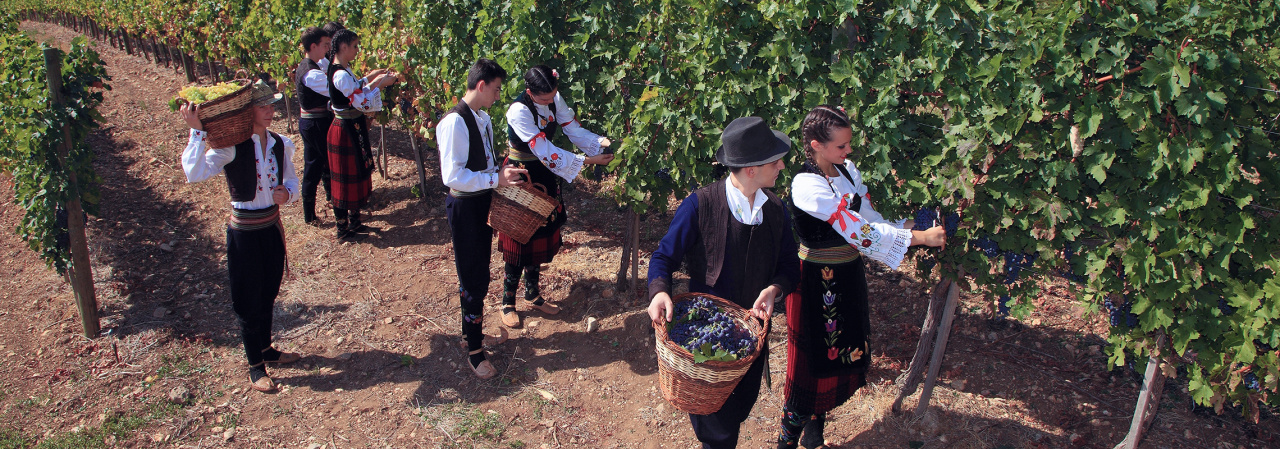
Festivals
Serbia is a country of merry and relaxed people, always willing to burst into song and dance. No wonder, then that there are festivals year-round as the local population kicks its heels in celebration of arts, sports, food and drink.Attending these festivals is a great way to get to know the locals and their customs as well as to discover different parts of the country. Everywhere you go, the hosts will welcome you with open arms, doing their best to help you fulfil your day and ensure an unforgettable experience in Serbia.
Serbia is known for its major music festivals, which draw in hundreds of thousands of Serbian and foreign music lovers every year. Each of these festivals has its distinctive audience, who sway to traditional or folk music, classical music, jazz, pop, rock or techno. With such a rich offering, you are sure to find a festival that suits your personal tastes.
The country’s film festivals, which attract huge audiences and renowned filmmakers, provide ample opportunities to watch award-winning films and enjoy the unique artistic visions of film-makers from all over the world.
Gourmands will feel at home at one of the gastronomy festivals where various delicacies from all over Serbia can be tasted, while lovers of wine and “rakija” will enjoy sampling the drink of their choice at one of the many dedicated festivals across the country.
– Film Festivals
– Culinary Festivals
– Music Festivals
– Art Festivals
– Wine Festivals
– Sport Events
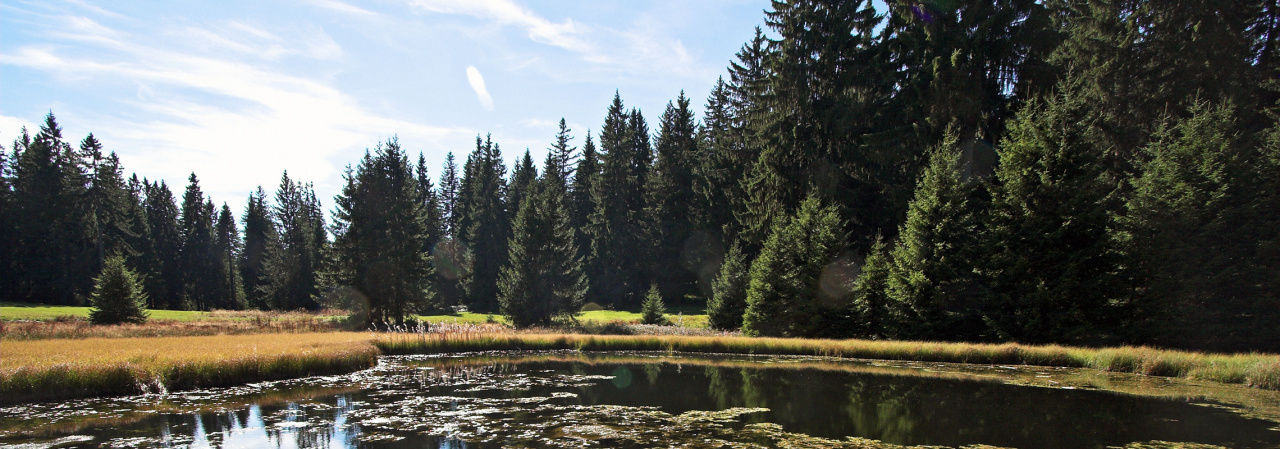
Nature
Serbia is a country full of hidden natural treasures, so hurry up and discover them!From the vast plains in the north to the high mountains in the south, Serbia will constantly surprise you with the diversity of its landscapes and the life that inhabits it. Many plant and animal species which are virtually extinct elsewhere in Europe have found sanctuary here.
The country’s national parks hide rare flowers, its clear rivers brim with globally endangered fish species and birds that have become almost extinct elsewhere soar above its mountain peaks. Plant lovers will also discover many native species, that grow only in these parts of the world.
Serbia also boasts Europe’s largest sand region, as well as numerous wetland areas, which have become home to many shorebird species.
Serbia’s magnificent natural resources are protected both nationally and internationally. Thus, the UNESCO International Co-ordinating Council of the Man and Biosphere Programme declared two biosphere reserves of outstanding natural interest and biodiversity, Golija-Studenica and Bačko Podunavlje.
UNESCO Reserves
In Serbia the Bačko Podunavlje and Golija Mountain both hold the prestigious title of designated UNESCO Biosphere Reserve. These unique natural sites, filled with lush flora and fauna, are well-preserved to ensure they can be enjoyed for generations to come.
Nature parks
Whichever nature park in Serbia you choose to visit, it will have its own unique story to tell you.
In Northern Serbia time seems to slow to a more leisurely pace – particularly when you relax on the shores of Lake Palić to enjoy freshly caught local fish and homemade wine.
In the west of the country, the history of the region is closely intertwined with nature. Mokra gora mountain is known for its narrow-gauge heritage railway line, the Šargan Eight and the increasingly popular ethno-village of Drvengrad. Zlatibor mountain will enchant you both with its nature and with superb feasts, made according to the traditional local recipes.
In the east, nature constructed its own lavish monuments which have stood the tests of time. Kučaj mountains are for adventurers seeking a new challenge and to explore undiscovered paths. Stara planina is ideal for anyone looking to enjoy an active holiday – including cyclists, paragliders and skiers.
In each of these nature parks you can also enjoy the lush plant and animal life.
Natural Monuments
Nature must have been overflowing with inspiration when creating Serbia’s landscape.
It was nature itself that shaped the bridges and gates on the river Vratna – it coloured the spring of the river Mlava and the Krupajsko vrelo spring with surreal hues, it dug through the green karst of Lazar’s Cave, making enchanting caves along the way. Nature also created the steps down which the river Sopotnica would descend with a mighty hum and nature that stacked rock upon rock to create the impressive figures of the Devil’s Town.
With all our knowledge and constantly advancing technologies, we will never come close to designing and building monuments that could match the magnificence of what Mother Nature “designed” herself.
Whichever of Serbia’s natural monuments you choose to visit, you will leave it with an insatiable thirst to experience more.
Nature Reserves
Nature reserves are the true gems of Serbia, we take immense pride in them and give them the care they deserve.
Here you can enjoy colourful and diverse nature, from the plains, wetlands and desert-like landscapes in the north of Serbia to the gorges and alpine landscapes in the southern regions.
Wherever you go, you will encounter unique natural oases, rich plant and animal life and cultural treasures from both the recent and distant past.As you face nature’s majestic creations in these reserves, you will begin to appreciate its true power and creativity.
Caves
Attractive, spacious and mysterious, Serbia’s caves are a must-see for archaeology and speleology enthusiasts, mountaineers and for all who appreciate pristine nature.
Some of them were inhabited by humans as early as in the Neolithic Period; others provided shelter to various animal species that have long since gone extinct such as cave bears, mammoths and polar foxes; there are also caves which hide whole rivers and waterfalls deep inside them… But they have all acquired the same natural shape over the centuries!
While archaeologists forage caves to uncover natural history, speleologists are drawn by the cave formations which decorate the ceilings and walls of each one of them. Stalactites, stalagmites, cave columns, draperies and petrified waterfalls are just some of the formations shaped by water drops over the millennia and coloured by cave minerals in a myriad of colours and shades.
These unique natural decorations can only be found inside caves, so a tour provides a special opportunity to enjoy them.
Rivers and Lakes
Serbia is a country blessed with an abundance of rivers and lakes, which provide ideal opportunities for holiday travel and recreation and are also perfect for cooling down during the hot summer months.
The miles-long basins of rivers such as the Sava and the Danube connect Serbia to other European countries, while rapid mountain rivers like the Drina are favourite gathering spots for extreme sports enthusiasts who enjoy rafting – which Serbia is widely known for.
Those who seek a more tranquil holiday can visit one of Serbia’s many lakes. Apart from enjoying clean water and maintained beaches, visitors can also take part in the many sports on offer at the lakes or enjoy a memorable night out.
Many rivers and lakes are rich in fish, which makes them particularly appealing during the fishing season. Depending on where you’re staying and fishing prowess you can try your hand at catching carp, trout, catfish, crucian carp and many more species of freshwater fish.
Experience the unique environment and wonderful atmosphere of the water and ensure you pay a visit to one of Serbia’s many rivers or lakes.
National Parks
Serbia boasts five national parks: Fruška Gora, Đerdap Gorge/Iron Gate, Tara, Kopaonik and Šar Mountain.
In the national parks, you can set out on a quest to find some of the most endangered species of flora and fauna, enjoy breath-taking views or collect medicinal wild herbs and mushrooms.
From the slopes of Mt. Fruška Gora you will experience a unique view of the undulating Panonian plain, while Đerdap will stun you with views of the deepest gorge in Europe.
On Tara Mountain you can see the endemic Serbian spruce (Picea omorika); Kopaonik Mountain entices you with its lush of flora and fauna, while Šar Mountain beckons with the surreal beauty of its glacial lakes.
Once you’ve experienced all that nature has to offer, you may wish to rest a little and take a break nearby at one of the historical monuments, some of which date back to Prehistoric times.
Whichever activity you choose to engage in, the national parks of Serbia will always welcome you with open arms.
You can also discover Serbia through a wide selection of sport activities, as the country abounds in places ideal for hiking, skiing, mountaineering, swimming, paragliding, cycling and kayaking – only your imagination is the limit!



